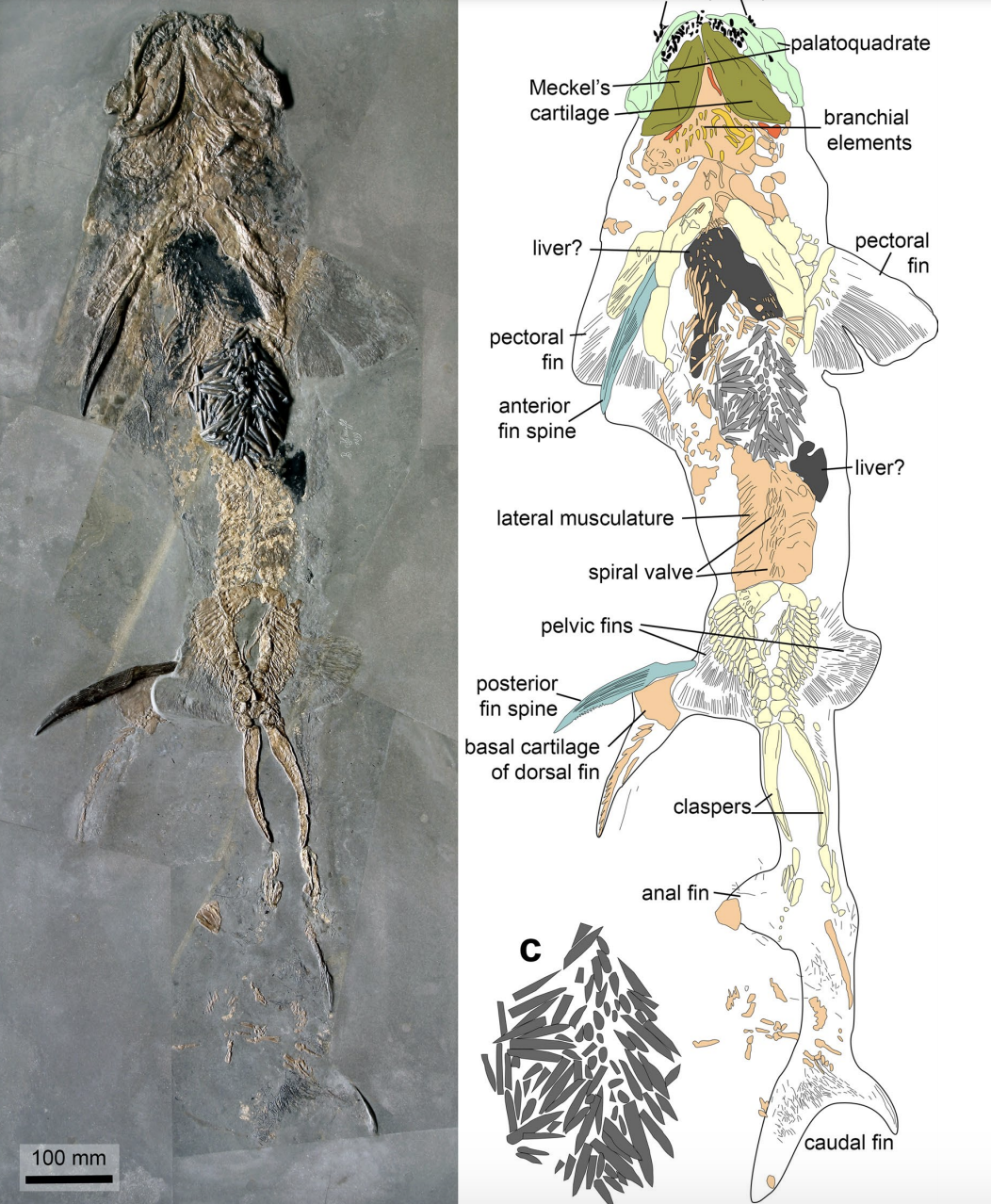Paleontologists from the University of Vienna and elsewhere have revised a controversial species of the elasmobranch Protospinax annectans based on new specimens from the Late Jurassic Konservat-Lagerstätte of the Solnhofen Archipelago in Bavaria, Germany.

Environmental reconstruction of the Solnhofen Archipelago, showing Protospinax annectans in association with the Late Jurassic ray Asterodermus platypterus. Image credit: Jambura et al., doi: 10.3390/d15030311.
“The fossil record of sharks and rays (Elasmobranchii) mainly consists of isolated teeth, which are rapidly grown and continuously replaced,” said Dr. Patrick Jambura, a researcher in the Department of Palaeontology at the University of Vienna, and colleagues.
“By contrast, skeletal remains are rare due to the poor preservation potential of the cartilaginous endoskeleton.”

“However, a few localities, so-called Konservat-Lagerstätten, are known to harbor skeletal material with exquisite preservation — sometimes even with soft tissue preservation — and, therefore, offer a unique window into the past.”
“The main Konservat-Lagerstätten for fossil elasmobranchs are several localities in Bavaria, Germany, which are collectively referred to as the Solnhofen Archipelago.”
In the new research, Dr. Jambura and colleagues examined the new fossil skeletal material of Protospinax annectans from the Konservat-Lagerstätte of the Solnhofen Archipelago and revised the skeletal morphology of this species.

“Protospinax annectans carried features that are found in both sharks and rays today,” Dr. Jambura said.
“This species lived some 150 million years ago and was a 1.5-m-long, dorso-ventrally flattened cartilaginous fish with expanded pectoral fins and a prominent fin spine in front of each dorsal fin.”
“Despite the excellent preservation of the previosuly known specimens, its phylogenetic relations with other elasmobranchs have been an enigma since the first description of this species in 1918.”
“Of particular interest is whether Protospinax annectans represents a transition between sharks and rays as a missing link — a hypothesis that has gained considerable appeal among experts over the past 25 years.”
“Alternatively, Protospinax annectans could have been a very primitive shark, an ancestor of rays and sharks, or an ancestor of a certain group of sharks, Galeomorphii, which includes the great white shark today.”

New fossil skeletal material of Protospinax annectans analyzed by Jambura et al. Image credit: Jambura et al., doi: 10.3390/d15030311.
The authors then reconstructed the family tree of extant sharks and rays using genetic data (mitochondrial DNA) and embedded fossil groups using morphological data.
Their results were startling: Protospinax annectans was neither a missing link nor a ray nor a primitive shark — but a highly-evolved shark.
“We tend to think of evolution like a hierarchical, ladder-like system, in which older groups are at the base, while humans, as a very young species in Earth history, are at the top,” Dr. Jambura said.

“In truth, however, evolution has never stopped even for these primitive representatives, but they continue to evolve day by day via changes in their DNA, just as we do.”
“This is the only way they have been able to adapt to constantly changing environments and survive to this day.”
“Even though cartilaginous fishes as a group have survived to this day, most species disappeared during its evolution, including Protospinax annectans.”
“Why Protospinax annectans became extinct at the Jurassic-Cretaceous boundary some 145 million years ago and why there is no comparable shark species today, while the ecologically similarly adapted rays exist relatively unchanged to this day, remains a mystery at this point.”
Source: sci.news








